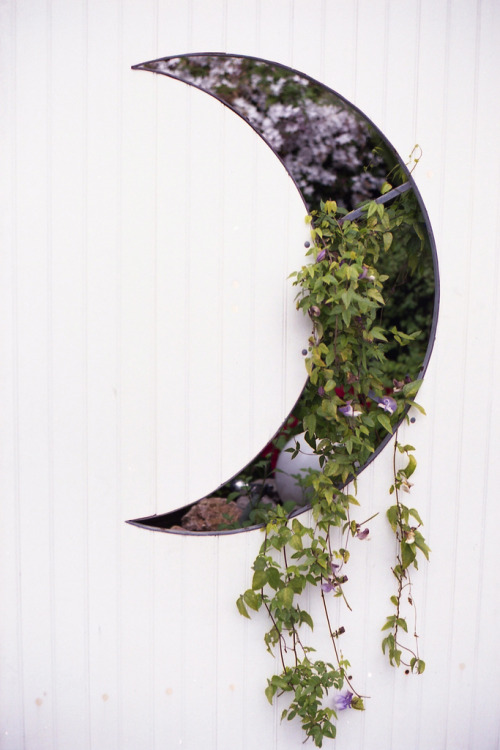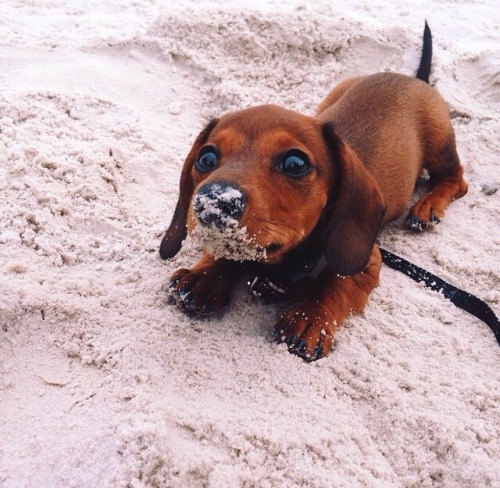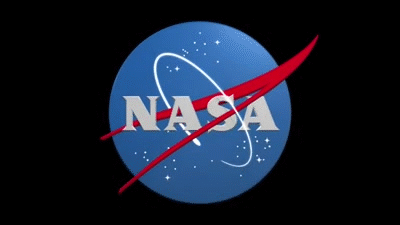NGC 5189.

NGC 5189.
Credit: NASA, ESA and The Hubble Heritage Team (STScI/AURA)
More Posts from Lanas-own-blog and Others

NGC 3324.
Credit: NASA, ESA and the Hubble Heritage Team (STScI/AURA)


Hundreds of you sent in questions for my live conversation with three astronauts and NASA’s chief scientist on Tuesday. Thanks! The most common question was: “What happens when you get your period in space?”
I didn’t end up asking this question because
a) the question itself has a lot of historical baggage b) the answer is pretty boring
But because people seemed genuinely curious, I decided to answer it here.
First, a bit of history…
In the early days of space flight, menstruation was part of the argument that women shouldn’t become astronauts.
Some claimed (1) that menstruation would effect a woman’s ability, and blamed several plane crashes on menstruating women. Studies in the 1940s (2,3) showed this was not the case. Female pilots weren’t impaired by their periods. But the idea wouldn’t die. In 1964, researchers from the Women in Space Program (4) still suggested (without evidence) that putting “a temperamental psychophysiologic human” (i.e. a hormonal woman) together with a “complicated machine” was a bad idea.
Others raised concerns about hypothetical health risks. They feared that microgravity might increase the incidence of “retrograde menstruation.” Blood might flow up the fallopian tubes into the abdomen, causing pain and other health problems. No one actually did any experiments to see if this really would be a problem, so there wasn’t any data to support or refute these fears.
Advocates for women in space argued that there had been a lot of unknowns when humans first went to space, but they sent men up anyway. Rhea Seddon, one of the first six women astronauts at NASA, recalled during an interview:
We said, “How about we just consider it a non-problem until it becomes a problem? If anybody gets sick in space you can bring us home. Then we’ll deal with it as a problem, but let’s consider it a non-problem.”
Just to give you a sense of the culture surrounding female astronauts back then, here’s an excerpt of a 1971 NASA report about potential psychological problems in space. Researchers Nick Kanas and William Fedderson suggest there might be a place for women in space:
The question of direct sexual release on a long-duration space mission must be considered. Practical considerations (such as weight and expense) preclude men taking their wives on the first space flights. It is possible that a woman, qualified from a scientific viewpoint, might be persuaded to donate her time and energies for the sake of improving crew morale; however, such a situation might create interpersonal tensions far more dynamic than the sexual tensions it would release.
Kanas, now an emeritus professor of psychology at UCSF, told me this was tongue-in-cheek — part of a larger discussion about the problem of sexual desire in space (5). Still, it’s surprising this language was included in an official NASA memorandum. Even advocates for women in space were caught up in this kind of talk. In a 1975 report for the RAND corporation, Glenda Callanen argues that women have the strength and intelligence to become astronauts. But here’s how she begins the report’s conclusion:
It seems inevitable that women are to be essential participants in space flight. Even if they were only to take on the less scientific parts of the space mission, or if they wished only to help “colonize” distant planets, their basic skills must still prepare them to perform countless new tasks.
In a culture where these statements were unremarkable, it’s easy to imagine that questions about menstruation weren’t purely motivated by scientific curiosity.
In 1983, 22 years after Alan Shepard became the first American to go to space, Sally Ride left earth’s atmosphere. She told an interviewer:
I remember the engineers trying to decide how many tampons should fly on a one-week flight; they asked, “Is 100 the right number?” “No. That would not be the right number.”
So what DOES happen when you get your period in space?
The same thing that happens on Earth! In the last three decades years of female space flight, periods in space have been normal — no menstrual problems in microgravity.
Notes:
RE Whitehead, MD. “Notes from the Department of Commerce: Women Pilots.” The Journal of Aviation Medicine 5 (Mar-Dec 1934):48.
RS Holtz, MD. “Should Women Fly During the Menstrual Period?” The Journal of Aviation Medicine 12 (Sept 1941):302.
J Cochrane. “Final Report on Women Pilot Program.” 38.
JR Betson and RR Secrest. “Prospective women astronauts selection program.” American Journal of Obstetrics and Gynecology 88 (1964): 421–423.
Kanas and Fedderson’s 1971 report went on to conclude: “Information regarding women during periods of stress is scanty. This lack, plus previously mentioned problems, will make it difficult for a woman to be a member of the first long-duration space missions. However, it is just as unlikely to think that women cannot adapt to space. Initial exploration parties are historically composed of men, for various cultural and social reasons. Once space exploration by men has been successfully accomplished, then women will follow. In preparation for this, more information should be compiled regarding the physiology and psychology of women under stressful situations.”





Milky Way over Bear Lake in Rocky Mountain National Park, CO
js
The NASA “Worm” Logo
Just like many organizations, the style and logos can change over time. You are probably most familiar with our “meatball” logo. No, unfortunately this does not refer to the delicious food. This logo (below) is our most popular symbol, and dates back to 1959.

But, we’ve also had other insignia that represented our organization throughout the years.
The “worm” logo (below) was used by the agency from 1975 until 1992. The organization wanted to create a more “modern” logo, which resulted in the unique type style of the “worm” logo.

Even though this logo was retired in 1992, the Graphics Standards Manual is still available online HERE.
You can also read up about the emblems, logos and insignia used by NASA throughout the years in a new e-Book available for free HERE.
Make sure to follow us on Tumblr for your regular dose of space:http://nasa.tumblr.com
-
 katejopswift19 reblogged this · 4 years ago
katejopswift19 reblogged this · 4 years ago -
 mouse-plant liked this · 4 years ago
mouse-plant liked this · 4 years ago -
 coyotegay liked this · 4 years ago
coyotegay liked this · 4 years ago -
 fuzzymiraclebanana reblogged this · 4 years ago
fuzzymiraclebanana reblogged this · 4 years ago -
 fuzzymiraclebanana liked this · 4 years ago
fuzzymiraclebanana liked this · 4 years ago -
 formallyoctobergods liked this · 4 years ago
formallyoctobergods liked this · 4 years ago -
 sharkatk reblogged this · 4 years ago
sharkatk reblogged this · 4 years ago -
 ghosttiddies liked this · 4 years ago
ghosttiddies liked this · 4 years ago -
 lvrtwn liked this · 4 years ago
lvrtwn liked this · 4 years ago -
 joeblack999 liked this · 6 years ago
joeblack999 liked this · 6 years ago -
 gingerann reblogged this · 6 years ago
gingerann reblogged this · 6 years ago -
 chalamet-x liked this · 7 years ago
chalamet-x liked this · 7 years ago -
 waschbaerbaer liked this · 7 years ago
waschbaerbaer liked this · 7 years ago -
 skysnow9 liked this · 7 years ago
skysnow9 liked this · 7 years ago -
 astralarrow reblogged this · 8 years ago
astralarrow reblogged this · 8 years ago -
 poweroftheuniverseee reblogged this · 8 years ago
poweroftheuniverseee reblogged this · 8 years ago -
 bbreathee-mee liked this · 8 years ago
bbreathee-mee liked this · 8 years ago -
 viridimagicae-blog reblogged this · 8 years ago
viridimagicae-blog reblogged this · 8 years ago -
 bloodred87 reblogged this · 9 years ago
bloodred87 reblogged this · 9 years ago -
 ineedspacex-blog reblogged this · 9 years ago
ineedspacex-blog reblogged this · 9 years ago -
 greystardustt reblogged this · 9 years ago
greystardustt reblogged this · 9 years ago -
 notthatlittlegurl liked this · 9 years ago
notthatlittlegurl liked this · 9 years ago -
 greystardustt liked this · 9 years ago
greystardustt liked this · 9 years ago -
 pain-demands-us-to-feel-it reblogged this · 9 years ago
pain-demands-us-to-feel-it reblogged this · 9 years ago -
 pain-demands-us-to-feel-it liked this · 9 years ago
pain-demands-us-to-feel-it liked this · 9 years ago -
 wheatbee reblogged this · 9 years ago
wheatbee reblogged this · 9 years ago -
 fatlumpsforlife liked this · 9 years ago
fatlumpsforlife liked this · 9 years ago -
 wellrounded-infinitelyminded reblogged this · 9 years ago
wellrounded-infinitelyminded reblogged this · 9 years ago -
 butchmime liked this · 9 years ago
butchmime liked this · 9 years ago -
 singzandsparklez reblogged this · 9 years ago
singzandsparklez reblogged this · 9 years ago -
 cottonvitellius-axv reblogged this · 9 years ago
cottonvitellius-axv reblogged this · 9 years ago -
 bloodred87 liked this · 9 years ago
bloodred87 liked this · 9 years ago -
 pumpkinpieeatyoface reblogged this · 9 years ago
pumpkinpieeatyoface reblogged this · 9 years ago -
 thelittlesthacker reblogged this · 9 years ago
thelittlesthacker reblogged this · 9 years ago -
 cravee-the-wavee liked this · 9 years ago
cravee-the-wavee liked this · 9 years ago -
 972279427 liked this · 9 years ago
972279427 liked this · 9 years ago -
 ksyu1 reblogged this · 9 years ago
ksyu1 reblogged this · 9 years ago -
 intracognition liked this · 9 years ago
intracognition liked this · 9 years ago -
 yourroyalhipocrasy reblogged this · 9 years ago
yourroyalhipocrasy reblogged this · 9 years ago -
 abdulrahimdatai-blog liked this · 9 years ago
abdulrahimdatai-blog liked this · 9 years ago -
 franziihaas reblogged this · 9 years ago
franziihaas reblogged this · 9 years ago -
 beauty-grace-obsessed-with-space reblogged this · 9 years ago
beauty-grace-obsessed-with-space reblogged this · 9 years ago
I've had lots of blogs in the past, but this one I'm actualy excited to share with people.
68 posts
